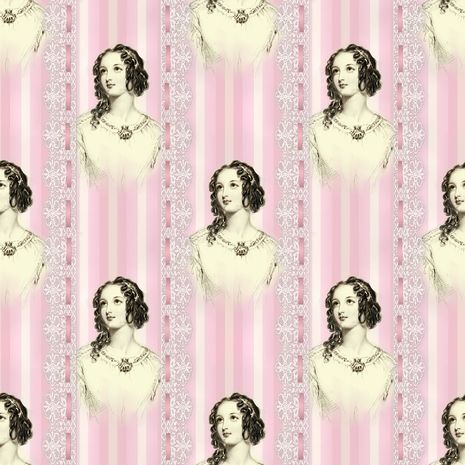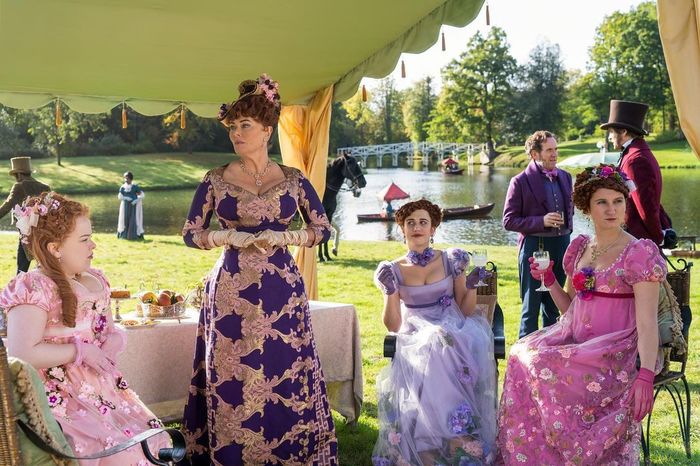Less sex, more sensibility: ‘Bridgerton’ Season two
In her review of season two of ‘Bridgerton’, Film and TV Editor Catrin Osborne notes that there are notably fewer raunchy scenes in this Regency drama

Content note: This article contains spoilers for the show
This viewer seldom admits it, but Bridgerton is my guiltiest pleasure. As a former English Literature student, I acknowledge that it is the TV version of the Walmart to Jane Austen’s Chanel. However, I believe Bridgerton’s cheap and cheerful tone is its greatest success and what makes it so irresistible when you simply want to turn off your brain for an hour.
“It’s utterly on-the-nose but at least the writers are trying”
In most aspects, the second season improves on the first; the plot actually feels cohesive, and the leads’ characterisation is far stronger (fortunately there were no morally questionable scenes like in the first season — I’m looking at you Daphne Bridgerton). We are treated to a classic slow-burn enemies to lovers narrative arc with all the quintessential moments, from sultry stares to forced embraces. Moreover, the twist of Anthony (Jonathan Bailey) being betrothed to the wrong sister adds intriguing familial jeopardy. Kate (Simone Ashley) is an enticing female lead and her sisterly dynamic with Edwina (Charithra Chandran) emulates that of The Taming of the Shrew — or the (in my opinion) far superior 10 Things I Hate About You (1999).
One of the season’s greatest strengths lies in its world-building. This time around we get to see interesting storylines for so many more characters, lining up a plethora of possibilities for seasons to come. In its Gossip Girl-inspired vein, a substantial amount of the season is spent on the Lady Whistledown narrative, showing an insight into Penelope’s (Nicola Coughlan) thoughts behind merely those expressed by her pen. Additionally, this plot allows a greater pondering of the Regency era’s feminist politics; everyone’s fan favourite Eloise (Claudia Jessie) has many a social justice warrior rant, and Kate voices far more thoughts than Daphne ever did. It’s utterly on-the-nose but at least the writers are trying.
@bridgertonnetflix on Instagramwww.instagram.com
The producers also took advantage of the nineteenth-century setting with scenes set at the races, at frequent balls and on hunting trips, as well as alluding to Lord Byron and Mary Wollstonecraft. Bridgerton is always visually enticing, showcasing Britain’s finest stately homes and an abundance of flowers. To complement its anachronistic tone, the season treated us to more classical arrangements of pop music, from Madonna to Miley Cyrus. The costuming wasn’t quite to the standard of other historical media such as Emma (2020), yet the dresses were gorgeous and the families’ colour-coded clothes are a pleasant spark of visual symbolism.
When Samuel Taylor Coleridge coined the term “suspension of disbelief”, he had Bridgerton’s cultural politics in mind. Rather than using colour-blind casting, the show seems to exist in an alternative universe where Regency Britain was far more diverse and racial barriers did not exist. As a white viewer, it is not my place to decide whether this is right or wrong. The second season does not attempt to explain it but again has many wonderful moments of cultural representation that would never be found in your regular period piece. Every now and then there’s a mention of empire, from imported peacocks to ruby mines in “the Americas”, which simply requires you to forget your reading of Edward Said’s Orientalism and revel in the representation. It makes no sense, but does it need to? As many Tweets have suggested, it is best to watch Bridgerton without an analytical brain and just enjoy seeing the rarity of a period piece that isn’t entirely white.
As ever, Bridgerton has been met with criticism. In a turn of events, this has been directed at the lack of NSFW scenes rather than the first season’s branding by many as ‘softcore porn’. In this season, the leads almost kiss so many times that you’d think you were watching a Disney Channel film. In the penultimate episode, Kate and Anthony finally get physical (to a classical rendition of Calvin Harris of course!). Under wisteria with a lot of slow-motion shots, the scene is satisfying, but not enough to sedate the desires of its viewership. As a PGCE student, I overheard a group of frustrated teachers and TAs lamenting the season’s purification. Perhaps the improvement of the script detracted the writers from one of the show’s biggest selling points.
Before this season was even conceived, the third was already signed off by Netflix. Despite all its questionable aspects, I will most definitely be watching what’s to come, so here’s to hopefully more technicolour costumes, classicised pop, plot cohesion for the Austen-lovers, and hanky panky for the mums.
 Comment / The (Dys)functions of student politics at Cambridge19 January 2026
Comment / The (Dys)functions of student politics at Cambridge19 January 2026 News / Local business in trademark battle with Uni over use of ‘Cambridge’17 January 2026
News / Local business in trademark battle with Uni over use of ‘Cambridge’17 January 2026 Features / Exploring Cambridge’s past, present, and future18 January 2026
Features / Exploring Cambridge’s past, present, and future18 January 2026 News / Your Party protesters rally against US action in Venezuela19 January 2026
News / Your Party protesters rally against US action in Venezuela19 January 2026 Lifestyle / Seoul food19 January 2026
Lifestyle / Seoul food19 January 2026







